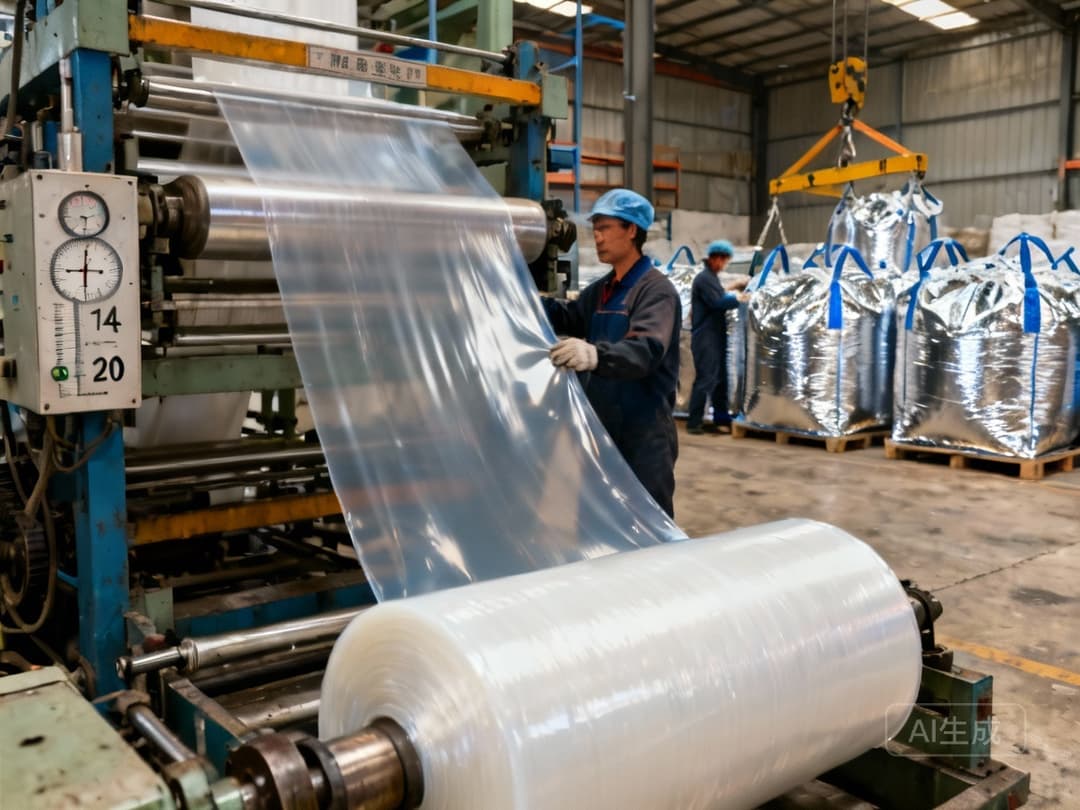Driven by innovation in ton bag technology: Analysis of opportunities and emission reduction potential in the Chinese packaging market worth 218.37 billion US dollars # 81

From 14 to 20 Silk: Decoding the Material Science Behind FIBC Thickness Specifications
The global packaging market is undergoing a significant transformation, with China's packaging sector projected to reach $218.3 billion by 2025, growing at a 4.96% CAGR through 2030. Within this expanding market, flexible intermediate bulk containers (FIBCs) represent a critical segment where technological innovation meets sustainability demands. The distinction between 14-silk and 20-silk thickness specifications isn't merely about measurements—it's about understanding the material science that drives market differentiation and premium pricing.
Market Dynamics: The Business Case for Precision Thickness Control
The flexible packaging segment is growing at 6.79% CAGR, outpacing the overall packaging market growth. This acceleration is driven by increasing demand for specialized FIBCs across pharmaceutical, chemical, and food industries. Dongguan manufacturers have demonstrated that premium thickness specifications command significant price premiums in export markets, particularly for specialized applications requiring 14-silk aluminum foil bags or 20-silk inner membrane bags.
Implementation guidance: Manufacturers should conduct market-specific analysis to determine optimal thickness specifications. Export markets typically require 14-20 silk thickness ranges for premium applications, while domestic markets may accept 10-14 silk specifications for standard use cases.
Material Science Innovation: Beyond Basic Specifications
The Heze Taihua case study reveals that material composition and processing parameters significantly impact final product performance. Their polypropylene formulation with stability additives, combined with precise extrusion and thermal setting processes, demonstrates how microscopic material structure affects macroscopic performance characteristics.
Premium FIBC manufacturers achieve 20-30% higher tensile strength through controlled thermal setting processes maintaining temperature accuracy within ±2°C throughout production cycles.
Implementation guidance: Establish laboratory testing protocols to verify thickness-performance relationships. Key tests should include:
- Tensile strength measurement at different thickness points
- Barrier performance validation for specific applications
- Accelerated aging tests for lifespan estimation
- Chemical resistance testing for intended contents
Process Optimization Framework: Precision Manufacturing Protocols
Based on successful implementation cases, manufacturers should focus on three critical process control areas:
Material Preparation Phase:
- Polypropylene purity levels: Maintain ≥99.5% purity
- Additive dispersion: Ensure uniform distribution within ±1.5% variance
- Moisture control: Keep material moisture content below 0.02%
Extrusion Process Parameters:
- Temperature zones: Control five heating zones within ±2°C tolerance
- Screw speed: Maintain consistency within ±0.5 RPM
- Die design: Optimize for uniform thickness distribution
Thermal Setting Precision:
- Stretching ratios: Control within ±1% of target values
- Temperature gradients: Maintain ±1.5°C across web width
- Cooling rates: Control within ±2°C/minute
Sustainability Integration: Emission Reduction Potential
The packaging industry faces increasing pressure to reduce environmental impact, with commitments to achieve 100% reusable, recyclable, or compostable packaging by 2025. FIBC manufacturers have a significant opportunity to contribute to sustainability goals while improving product performance.
Implementation guidance: Adopt circular economy principles through:
- Material selection: Prioritize mono-materials for improved recyclability
- Design optimization: Reduce material usage while maintaining performance
- Recycling infrastructure: Develop take-back programs for end-of-life FIBCs
- Lifecycle assessment: Implement comprehensive environmental impact tracking
ROI Calculation Model: Technology Investment Justification
Based on industry data and manufacturing cases, we've developed a comprehensive ROI model for thickness technology upgrades:
Investment Components:
- Precision extrusion equipment: $250,000-500,000
- Thermal control systems: $75,000-150,000
- Quality testing laboratory: $100,000-200,000
- Operator training: $25,000-50,000
Return Components:
- Price premium: 15-25% for precision-thickness products
- Market share increase: 8-12% in premium segments
- Production efficiency: 5-8% reduction in material waste
- Customer retention: 10-15% improvement in repeat business
Typical payback periods range from 18-24 months for comprehensive technology upgrades, with ongoing annual returns of 25-35% on invested capital.
Quality Assurance Protocol: 15-Point Verification Checklist
Implement this comprehensive quality verification protocol before product shipment:
- Thickness consistency verification across web width
- Tensile strength measurement at designated points
- Seam integrity testing under load conditions
- UV resistance validation for outdoor applications
- Chemical compatibility testing
- Moisture barrier performance measurement
- Static control verification for flammable contents
- Dimension accuracy confirmation
- Printing adhesion and durability testing
- Filling/discharge fitting functionality
- Stacking stability assessment
- Accelerated aging simulation
- Temperature resistance verification
- Drop test performance evaluation
- Certification compliance documentation
Strategic Implementation Roadmap
Manufacturers should follow this phased approach to technology adoption:
Phase 1: Foundation Building (Months 1-3)
- Conduct comprehensive technology assessment
- Establish baseline performance metrics
- Identify key improvement opportunities
- Develop implementation budget and timeline
Phase 2: Technology Integration (Months 4-9)
- Procure and install precision equipment
- Implement process control systems
- Train operations and quality teams
- Establish testing protocols
Phase 3: Optimization (Months 10-18)
- Fine-tune process parameters
- Expand product capabilities
- Develop premium market channels
- Implement continuous improvement processes
The FIBC manufacturing sector stands at an inflection point where technological sophistication directly correlates with market success. By embracing precision manufacturing principles and advanced material science, manufacturers can capture significant value in the expanding $218.3 billion packaging market while contributing to sustainability goals through reduced waste and improved product lifespan.
